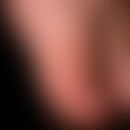Synonym(s)
HistoryThis section has been translated automatically.
DefinitionThis section has been translated automatically.
Probably regularly-dominantly inherited cornification disorder with dark and light bands that change at regular intervals in the longitudinal direction of the hair and shift according to the incidence of light. The light bands show an abnormal air content of the hair marrow or cortex. As a rule, the hair is strong and healthy, less often fragile.
Associations with Alopecia areata (formation of Pili anulati after rehair and wool hair are described. Furthermore an association with Rothmund-Thomson syndrome with a mutation in the RECQL4 gene has been described (Bhoyrul B et al. 2018). Note: The protein encoded by the RECQL4 gene is a DNA helicase belonging to the RecQ helicase family. DNA helicases unwind double-stranded DNA into single-stranded DNAs and can modulate chromosome segregation. The connection with the occurrence of Pili anulati is unclear.
You might also be interested in
ManifestationThis section has been translated automatically.
ClinicThis section has been translated automatically.
Differential diagnosisThis section has been translated automatically.
TherapyThis section has been translated automatically.
LiteratureThis section has been translated automatically.
- Bhoyrul B et al (2018) Pili annulati in a case of Rothmund-Thomson syndrome with a novel frameshift mutation in RECQL4. J Eur Acad Dermatol Venereol 32:e221-e223.
- Castelli E et al (2012) Pili annulati coincident with alopecia areata, autoimmune thyroid disease, and primary IgA deficiency: case report and considerations on the literature. Case Rep Dermatol 4:250-255
Cruz AP et al(2012) The appearance of pili annulati following alopecia areata. Cutis. 89:145-147
- Hofbauer GF al. (2001) Acquired hair fragility in pili annulati: causal relationship with androgenetic alopecia. Dermatology 20: 60-62
Laniosz V et al (2013) Pili annulati masquerading as hypotrichosis. Pediatric Dermatol 30: 510-511
Incoming links (6)
Hair color changes; Hair shaft anomalies (overview); Monilethrix; Pili pseudoanulati; Striped hair; Wooly hair ;Outgoing links (5)
Alopecia areata (overview); Hair shaft anomalies (overview); Pili pseudoanulati; Rothmund-thomson syndrome; Vellus hair;Disclaimer
Please ask your physician for a reliable diagnosis. This website is only meant as a reference.




